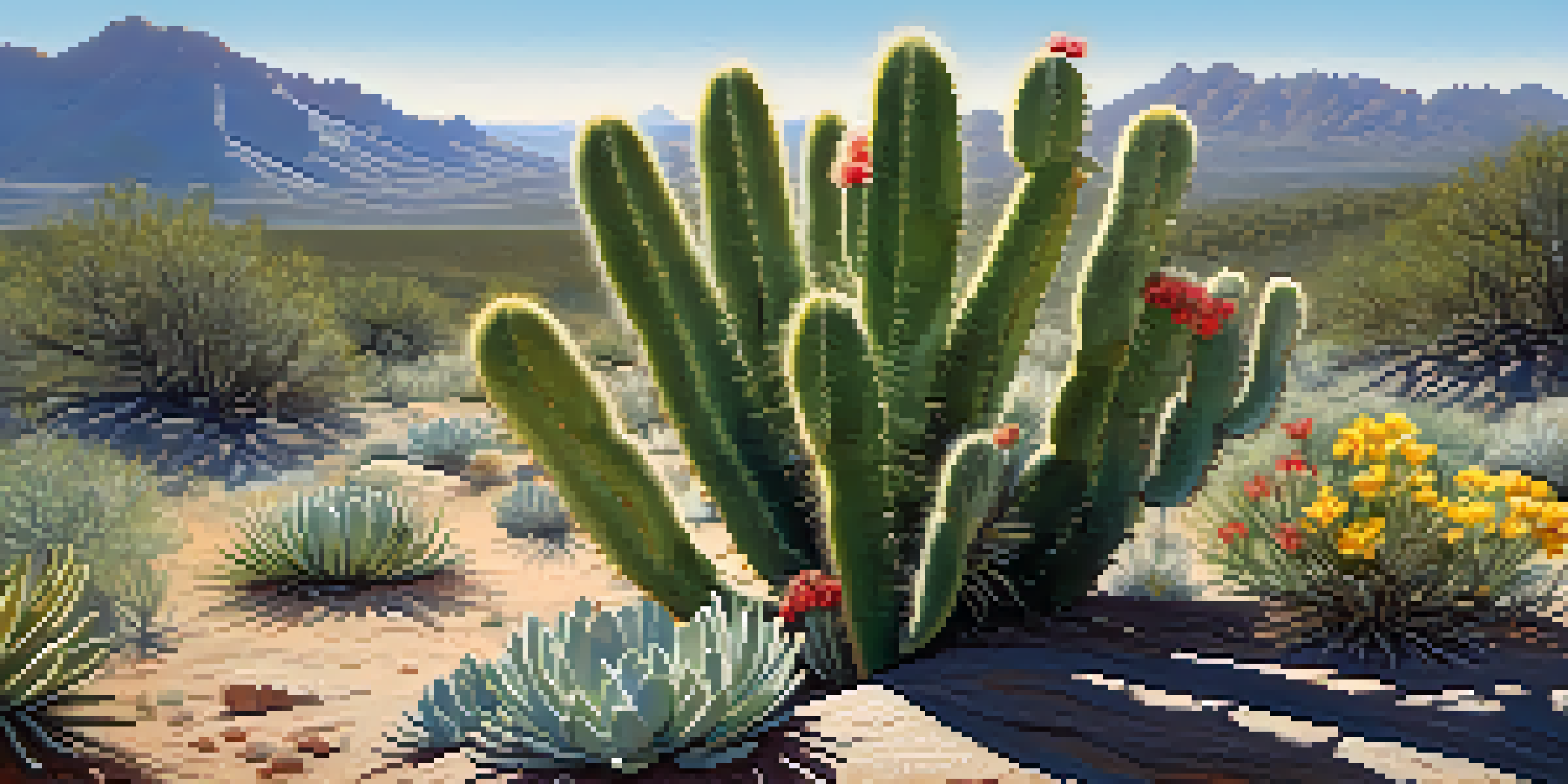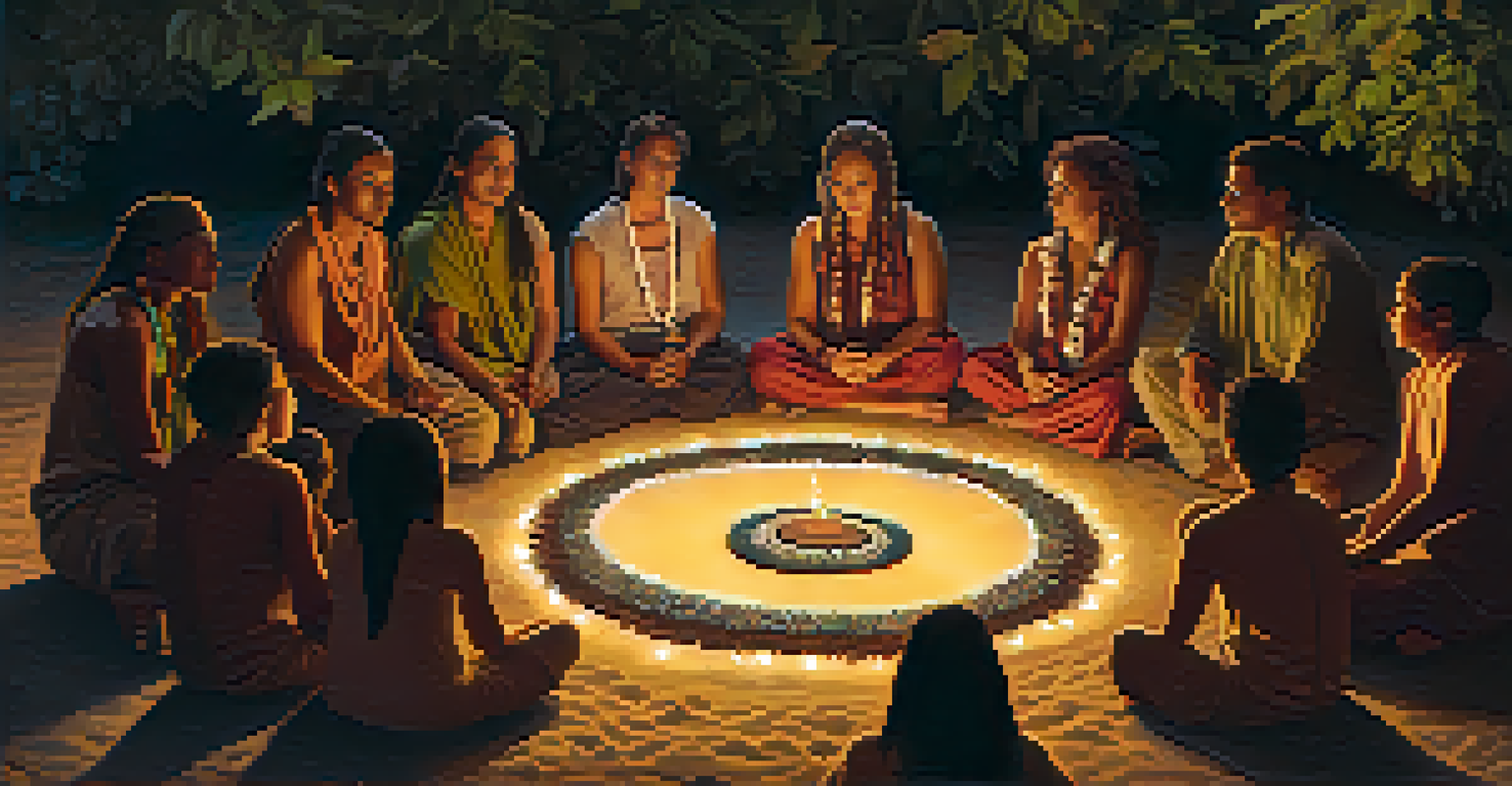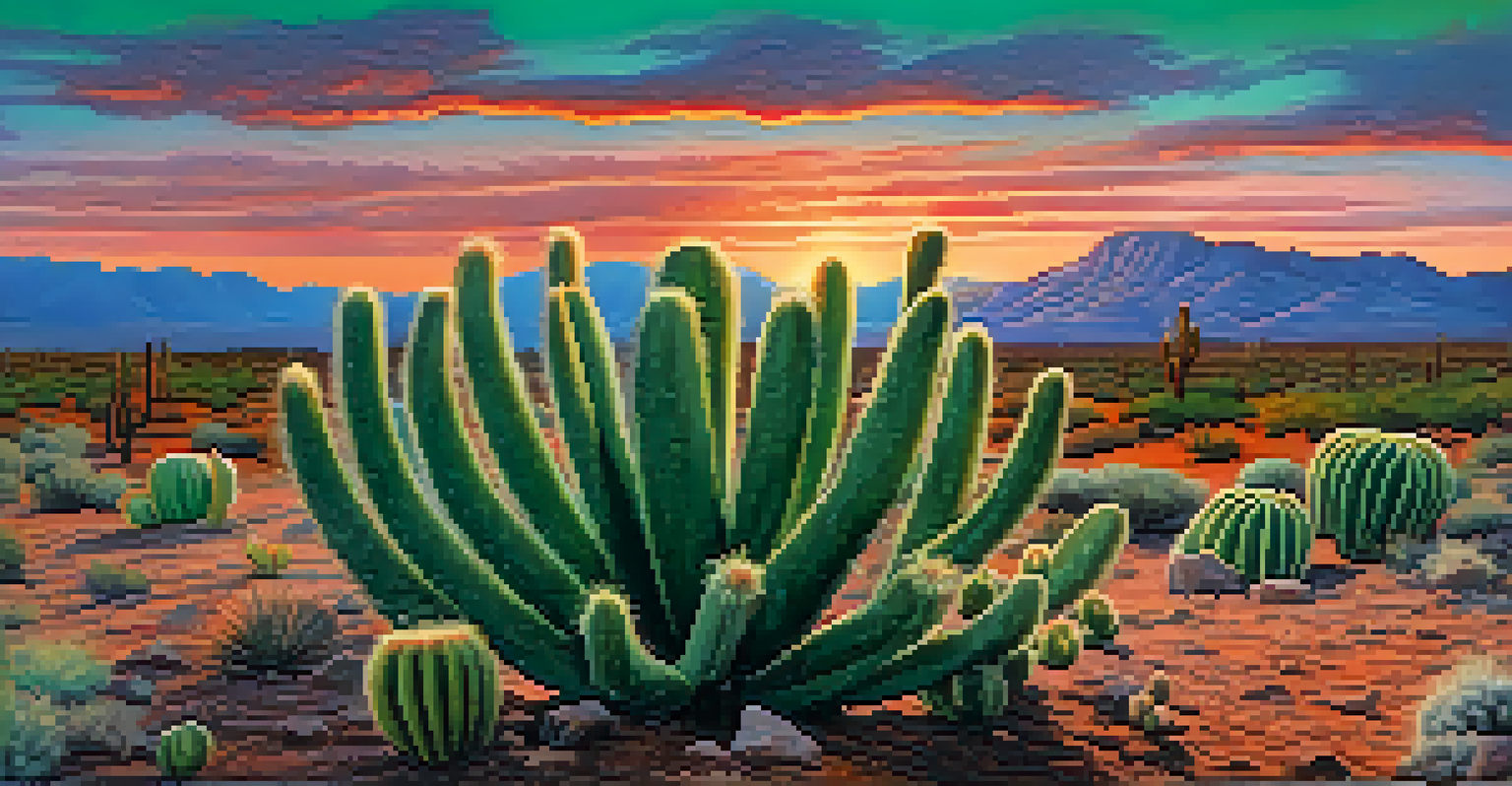The Role of Peyote in Understanding Interconnectedness

What is Peyote and Its Cultural Significance?
Peyote is a small, spineless cactus that contains mescaline, a powerful psychedelic compound. Historically, it has been used for thousands of years by Indigenous peoples, particularly in North America, for spiritual ceremonies and healing rituals. This cultural significance is rooted in the belief that peyote can facilitate a unique connection to the divine and to nature, making it a vital part of their identity and spirituality.
The greatest discovery of my generation is that a human being can alter his life by altering his attitude.
The use of peyote is more than just a ritualistic practice; it's a way for communities to bond and share profound experiences. During ceremonies, participants often report feelings of unity with one another and the surrounding environment. This shared experience fosters a sense of belonging and interconnectedness that is essential to their cultural fabric.
Understanding peyote's role in these traditions helps us appreciate its impact on community cohesion and spiritual exploration. It's not merely a plant; it's a bridge to deeper understanding and connection among people and the universe.
The Science Behind Peyote and Mescaline
Mescaline, the active ingredient in peyote, affects the brain's serotonin receptors, leading to altered perceptions and insights. This can manifest as visual and auditory hallucinations, but more importantly, it often promotes feelings of unity and interconnectedness. Studies have shown that psychedelics like mescaline can enhance empathy and compassion, which are crucial for fostering connections with others.

Additionally, the experiences induced by mescaline can lead to profound personal revelations, allowing individuals to see their lives and relationships from new perspectives. This shift in perception can help break down barriers of separation, encouraging a sense of oneness with all living things. Essentially, mescaline acts as a catalyst for deeper understanding and connection.
Peyote's Cultural Importance
Peyote serves as a vital element in Indigenous spiritual practices, fostering community bonds and personal connections to the divine.
The intersection of science and spirituality in the context of peyote use is fascinating. As we explore the biochemical effects of mescaline, we also delve into the personal and communal transformations it can inspire, highlighting the profound interconnectedness of human experience.
Interconnectedness Through Shared Experiences
One of the most impactful aspects of peyote ceremonies is the shared experience among participants. In these gatherings, individuals come together to partake in rituals that often last for hours, during which they share their thoughts, feelings, and visions. This collective journey fosters a deep sense of unity, as everyone navigates their experiences together, enhancing their feelings of interconnectedness.
In every walk with nature one receives far more than he seeks.
These shared experiences create a unique space for vulnerability and openness, allowing participants to support each other emotionally and spiritually. The act of sharing stories and insights during and after the ceremony helps solidify bonds, reinforcing the idea that we are all part of something greater than ourselves. It’s this mutual support that strengthens community ties and encourages a collective understanding of our shared humanity.
In essence, peyote serves as a tool for connection, not just with the self but with others. This shared journey amplifies the realization that we are all interconnected, leading to a more profound appreciation for the relationships we cultivate in our lives.
Peyote and Nature: A Spiritual Connection
The experience of using peyote often brings individuals into a closer relationship with nature. During ceremonies, participants frequently report feelings of merging with the natural world, sensing its rhythms and energies. This connection to nature is not only a spiritual awakening but also a reminder of our place within the broader ecosystem of life.
Many users describe vivid images of landscapes, animals, and elements of nature that resonate deeply with them. These experiences can evoke a sense of responsibility and stewardship towards the environment, reinforcing the belief that we are all interconnected with the earth and its inhabitants. The realization that our actions impact the world around us can lead to a greater commitment to environmental conservation.
Healing Through Community
The communal use of peyote during ceremonies promotes healing and resilience, emphasizing the importance of collective support in overcoming trauma.
Thus, peyote not only connects us with each other but also with the planet we inhabit. This holistic perspective encourages a deeper respect for nature and an understanding of our role in its preservation, emphasizing that our well-being is intertwined with the health of the Earth.
Healing Through Interconnectedness
Many Indigenous cultures utilize peyote for healing purposes, viewing it as a means to restore balance both individually and collectively. The insights and emotional releases experienced during peyote ceremonies can lead to significant healing from trauma and emotional pain. This process often encourages individuals to confront their struggles and seek support within their community, reinforcing the idea that healing is not a solitary journey.
As participants share their experiences, they create a network of support that fosters resilience and healing. This interconnectedness is vital; it reminds individuals that they are not alone in their struggles and that collective healing can occur through shared vulnerability. The community becomes a source of strength, illustrating the power of relationships in the healing process.
Ultimately, the role of peyote in healing highlights the importance of interconnectedness in our lives. It shows us that by coming together and supporting one another, we can navigate our challenges more effectively and find solace in our shared experiences.
Challenges and Misunderstandings of Peyote Use
Despite its rich cultural significance, the use of peyote is often misunderstood or stigmatized, particularly in Western contexts. Many people associate peyote with recreational drug use, overlooking its spiritual and communal aspects. This misunderstanding can lead to a lack of respect for the traditions and rights of Indigenous peoples who have used peyote for centuries as a sacred medicine.
Moreover, legal restrictions on peyote can hinder authentic cultural practices, making it challenging for Indigenous communities to maintain their traditions. These challenges underscore the importance of education and awareness in fostering a deeper understanding of peyote's role in promoting interconnectedness and community healing.
Misunderstandings of Peyote Use
Peyote is often misperceived as a recreational drug, overshadowing its sacred and communal significance in Indigenous cultures.
By addressing these misconceptions, we can begin to appreciate the profound lessons that peyote offers regarding our relationships with each other and the world. Respecting its cultural significance is crucial for supporting the rights of Indigenous peoples and recognizing the valuable insights that peyote can provide in our quest for interconnectedness.
The Future of Peyote and Interconnectedness
As society shifts towards greater awareness of mental health and spirituality, there is a growing interest in the therapeutic potential of psychedelics, including peyote. This resurgence invites us to re-examine its role in promoting interconnectedness and healing within modern contexts. More research is needed to explore how peyote can be integrated into contemporary therapeutic practices while respecting its cultural roots.
The future of peyote also hinges on the preservation of its natural habitat and the rights of Indigenous peoples. Sustainable practices and ethical usage are essential to ensure that this sacred plant continues to thrive for generations to come. By supporting Indigenous-led initiatives and promoting awareness, we can contribute to the ongoing legacy of peyote as a tool for connection.

In conclusion, as we navigate the complexities of modern life, the lessons from peyote regarding interconnectedness may be more relevant than ever. Embracing these insights can lead to a deeper understanding of ourselves, our communities, and our relationship with the natural world, fostering a more unified and compassionate society.